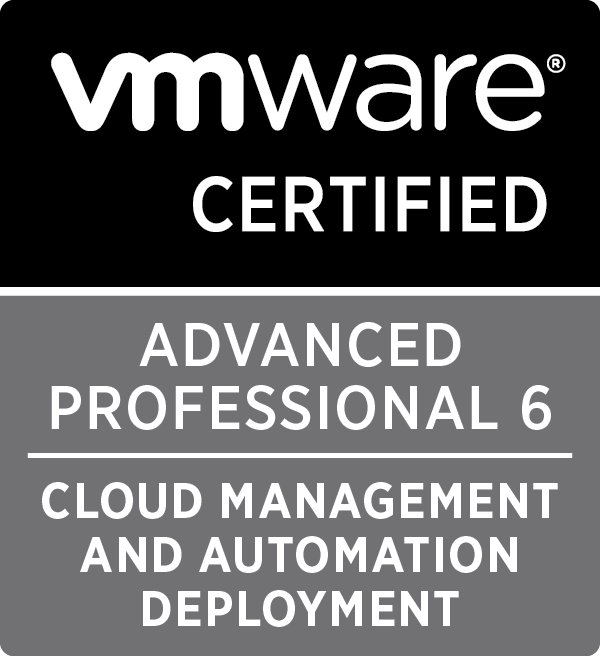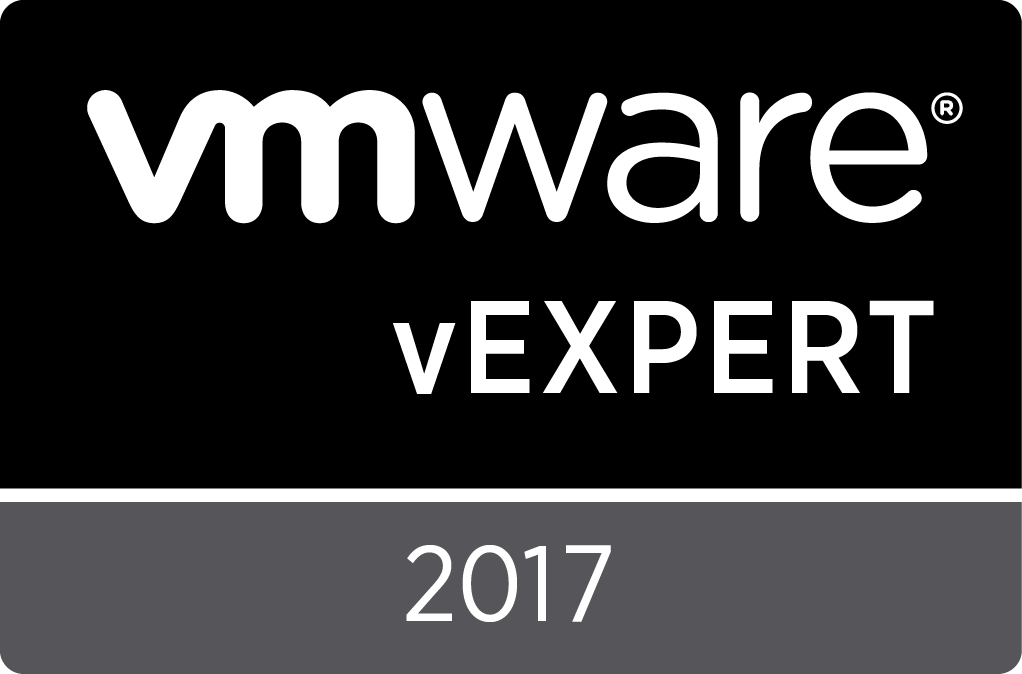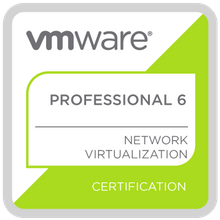Achievement Unlocked - VMware Certified Professional 6 - Network Virtualization
VCAP6-CMA Deploy Exam - What a #Terrible Experience!

This post is a part of a series of posts for preparation for the VCAP6-CMA Deploy exam. In this post we review the exam taking experience of the VCAP6-CMA exam!
Written by Christopher Lewis on February 13, 2017 .
VCAP6-CMA
VCIX6
vRealize Automation
Written by Christopher Lewis on February 13, 2017 .
VCAP6-CMA Deploy - Objective 8.1: Deploy and Manage a vRealize Business Standard Appliance

In this post we cover VCAP6-CMA Deploy - Objective 8.1: Deploy and Manage a vRealize Business Standard Appliance appliance
Written by Christopher Lewis on February 11, 2017 .
VMware
vRealize Automation
vRealize Business
VCAP6
VCAP6-CMA
Written by Christopher Lewis on February 11, 2017 .
VCAP6-CMA Deploy - Objective 3.1: Configure and Manage NSX Integration with vRealize Automation

In this post we cover the VCAP6-CMA Deploy - Objective 3.1: Configure and Manage NSX Integration with vRealize Automation
Written by Christopher Lewis on February 11, 2017 .
vRealize Automation
VCAP6
VCAP6-CMA
NSX-V
Written by Christopher Lewis on February 11, 2017 .
VCAP6-CMA Deploy - Objective 4.4: Import existing workloads

In this post we cover the VCAP6-CMA Deploy - Objective 4.4: Import existing workloads
Written by Christopher Lewis on February 11, 2017 .
VMware
vRealize Automation
VCAP6
VCAP6-CMA
Written by Christopher Lewis on February 11, 2017 .
Achievement Unlocked: VMware vExpert 2017

In this post I celebrate the win of being accepted as a vExpert for 2017!
Written by Christopher Lewis on February 8, 2017 .
vExpert
Written by Christopher Lewis on February 8, 2017 .
HOWTO: Configure a vRealize Automation 6 Advanced Services Endpoint for vCenter Server

This post is a part of a series of posts for preparation for the VCAP6-CMA Deploy exam. In this post we walkthrough how to configure a vRealize Automation 6 Advanced Services Endpoint for vCenter Server
Written by Christopher Lewis on February 7, 2017 .
VMware
vRealize Automation
vRealize Orchestrator
VCAP6
VCAP6-CMA
Written by Christopher Lewis on February 7, 2017 .
VCAP6-CMA Deploy - Objective 6.1: Configure Advanced Service Designer

In this post we cover VCAP6-CMA Deploy - Objective 6.1: Configure Advanced Service Designer
Written by Christopher Lewis on February 7, 2017 .
VMware
vRealize Automation
vRealize Orchestrator
VCAP6
VCAP6-CMA
Written by Christopher Lewis on February 7, 2017 .
HOWTO: Configure a vRealize Automation 6 Advanced Services Endpoint for Active Directory

This post is a part of a series of posts for preparation for the VCAP6-CMA Deploy exam. In this post we walkthrough how to configure a vRealize Automation 6 Advanced Services Endpoint for Active Directory
Written by Christopher Lewis on February 7, 2017 .
VMware
vRealize Automation
vRealize Orchestrator
VCAP6
VCAP6-CMA
Written by Christopher Lewis on February 7, 2017 .
VCAP6-CMA Deploy - Objective 5.2 - Modify a Blueprint to invoke a Workflow during a Lifecycle Change

In this post we cover VCAP6-CMA Deploy - Objective 5.2 - Modify a Blueprint to invoke a Workflow during a Lifecycle Change
Written by Christopher Lewis on February 7, 2017 .
VMware
vRealize Automation
VCAP6
VCAP6-CMA
Written by Christopher Lewis on February 7, 2017 .
Recent Posts:
Blog Categories:
active directory 6
aria automation 9
aria automation orchestrator 1
aria operations 2
aws 2
blog 1
career 1
certificate authority 5
certificates 5
certification 91
cloud management 1
cloudnativecon 1
community 1
fun 1
general 9
hands on labs 1
home lab 2
kubecon 1
kubernetes 1
microsoft 7
nsx 45
nsx v 41
powercli 8
powershell 6
reviews 1
vcap 48
vcap6 2
vcenter 4
vcix 2
vexpert 9
vmug 5
vmware 99+
vmware aria 1
vmware aria automation 9
vmware aria automation orchestrator 1
vmware aria operations 4
vmware cloud 3
vmware cloud director 1
vmware explore 2
vmware identity manager 2
vmworld 36
vrealize automation 80
vrealize automation saltstack config 1
vrealize business 2
vrealize log insight 1
vrealize operations 1
vrealize operations manager 5
vrealize orchestrator 13
vrealize suite 14
vrealize suite lifecycle manager 20
vsan 5
vsphere 9
windows 6
Top Tags:
active directory 6
api 18
barcelona 24
certificates 11
certification 7
howto 33
microsoft 7
multi tenancy 9
nsx v 43
platform services controller 8
powercli 8
powershell 7
psc 6
vcap 9
vcap6 45
vcap6 cma 48
vcap6 nv 37
vcix6 nv 36
vexpert 19
vmug 8
vmware 99+
vmware aria 11
vmware aria automation 9
vmworld 35
vmworld 2016 13
vmworld 2017 9
vra 13
vrealize automation 74
vrealize operations 8
vrealize orchestrator 21
vrealize suite lifecycle manager 11
vrslcm 20
vsan 7
vsphere 12

